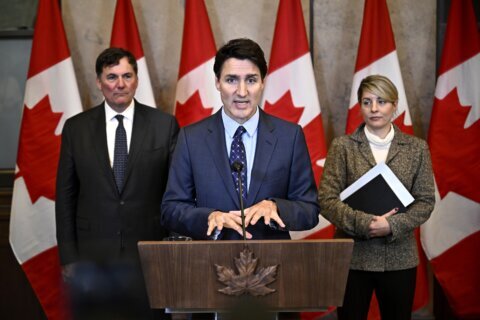The statistics are staggering: 1 in 11 Americans has diabetes; nearly 1 in every 2 adults has diabetes or prediabetes; and more than 300 million work days are lost to the economy due to diabetes. Diabetes is a disease that requires rigorous self-management and additional health care services and tools, and its heavy economic burden threatens the American economy.
As detailed in the American Diabetes Association’s new “Economic Costs of Diabetes in the U.S. in 2017” report, 1 in every 4 health care dollars spent in 2017 (24 percent) was for the care of people with diabetes, and 1 of every 7 health care dollars (14 percent) can be attributed directly to care for diabetes. In 2017, $327 billion was spent on diagnosed diabetes. During our March 22 audience with Sens. Susan Collins and Jeanne Shaheen to release the report, it was clear the report’s results sound the alarm bell once again about the devastating fiscal impact of diabetes on our nation: $237 billion in direct medical costs and $90 billion in reduced productivity; plus, diabetes resulted in 277,000 premature deaths.
[Read: 6 Ways to Save Money on Your Diabetes Medications.]
According to a 2016 report in the Journal of the American Medical Association, at $327 billion annually, diabetes exceeds the costs of the other top five health care costs: cardiovascular diseases ($231 billion); other noncommunicable diseases ($192 billion); mental and substance abuse disorders ($188 billion); musculoskeletal diseases ($184 billion); and injuries ($168 billion).
In 2017, America spent $327 billion on both direct and indirect expenses for diagnosed diabetes. These costs are passed to each one of us, regardless of whether or not we have diabetes. Each of us contributes to covering these costs in the form of higher health insurance premiums, additional taxes, reduced earnings and reduced standard of living.
[Read: 11 Tips for Testing Your Blood Sugar at Home.]
Since the 1990s, research advances resulting in reduced morbidity and mortality are impressive, and we have significantly improved the care and outcomes for people with diabetes — the vast majority of whom are living longer, healthier lives with diabetes. However, our research advances are tempered by the fact that the overall global burden of the disease is projected to increase by 48 percent by 2045. In the U.S., another individual is newly diagnosed with diabetes every 21 seconds (4,110 people today). And diabetes is the seventh leading cause of death in America, killing more people than AIDS and breast cancer combined.
We must heed the warnings of the scientific evidence before us — diabetes is our nation’s most expensive health condition. We must take action to reduce both the incidence and prevalence of diabetes, thereby reducing its costs.
[Read: 11 Ways to Save on Diabetes Supplies.]
As Dr. Emanuel recommended in his 2016 editorial, our health care system must refocus on the management of chronic, lifelong conditions; we must reconnect and continually evaluate our public health spending in relation to health care costs. To achieve these goals, we must, as a nation, make diabetes a national priority.
William T. Cefalu, MD, is the chief scientific, medical and mission officer at the American Diabetes Association.
More from U.S. News
9 Reasons You Should Return to Work After a Stroke
9 Ways Saliva Reflects Your Health
Diabetes: Our Nation’s Most Expensive Health Condition originally appeared on usnews.com







